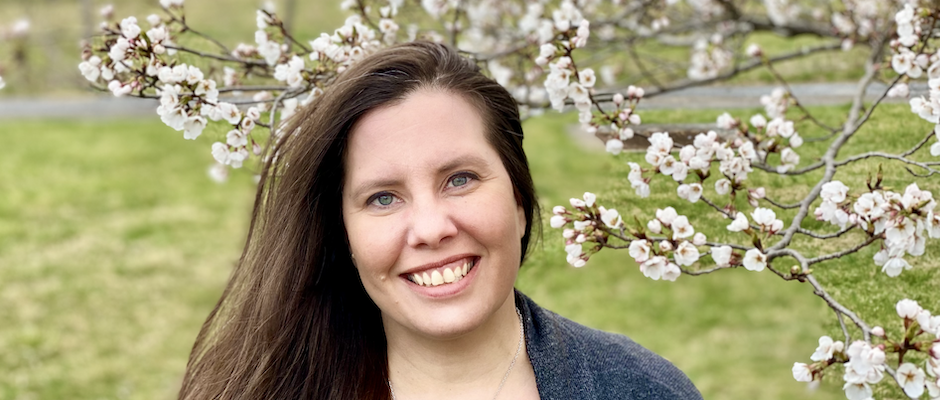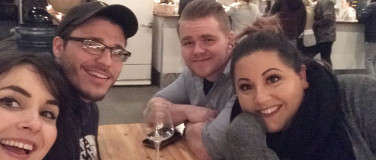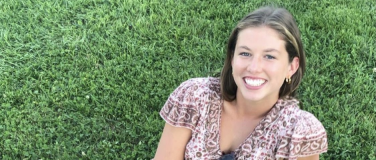
Endometriosis is a cruel disease that I have battled most of my life. I was diagnosed in college and was told then by my doctors that it was so severe I would never have children.
I distinctly remember the day I started my period as a preteen because of the extreme pain. My periods have always been heavy and painful, with cramps and gastrointestinal pain that have me doubled over and barely able to walk some days. The pain begins about a week before my period and lasts about a week after, so any given month I am only pain free for about a week. A heating pad cranked as high as possible and a few Midol are all that seems to somewhat relieve the pain temporarily.
I tried birth control in college to try to help ease the pain, but after a while I decided to stop using the pills.
In my mid 20's, I had just moved to a new state and started a new job. It was stressful and the days were long. I wasn't sleeping or taking care of myself, so when my periods became more painful and I was totally drained all the time, I just assumed it was because of my work schedule. After physically being unable to get out of bed one morning I finally made an appointment to see a doctor. A vaginal ultrasound was ordered and you know things aren’t good when the sonographer says, "Oh god," and gasps. But she wouldn't tell me anything; she just kept saying "well you will have to get the doctor to give you more information."
My doctor discovered both my ovaries had very large chocolate cysts. There was so much scar tissue and endometriosis that my uterus had completely tipped backwards. My ovaries were encased and my Fallopian tubes were completely closed.
My doctor suggested a series of procedures and tests right away to ensure there was nothing cancerous and assess the extent of the damage from the endometriosis, especially since I still had hopes of possibly getting pregnant.
In the course of a few months I had a D&C, a seven-hour laparoscopy, and a hysterosalpingogram. I had stage 4 endometriosis. When the doctor showed me the photos from the laparoscopy, I almost passed out. I was shocked at the extent of the scar tissue, the size of the cysts on my ovaries, and the overall impact of what this disease had done to my body. Following the procedures, my doctor suggested a six-month medically-induced menopause by taking Lupron to reset my reproductive system.
Those six months were total hell. I had hot flashes and mood swings. I was a total mess. My doctor said to look on the bright side: I would know what to expect when menopause happens for real. He told me most likely I would have to have another laparoscopy before I could even think about conceiving.
Just a few weeks later, I walked into his office with three positive at-home pregnancy tests. Seeing my little embryo for the first time, my little peanut, I couldn't stop crying. My husband and I were so surprised and excited. I was 27. My doctor followed up with a few more ultrasounds to make sure the baby was developing; I even got to see a heartbeat and little feet wiggling. Since he was a gynecologist and was no longer practicing obstetrics, he referred me to another doctor. The pregnancy progressed perfectly and my son was born on New Year's Eve.
My new doctor was off at the time my son was born so I had a completely different doctor during delivery. I decided to continue to see him for the next few years as my husband and I hoped to conceive again. As the months ticked by, each period held deep disappointment not only because the pain returned but also because we weren't pregnant. After dealing with several more cysts on my ovaries, I had another laparoscopy. I also religiously started tracking my periods in hopes of hitting my ovulation windows. My husband and I discussed other medical alternatives but we didn't have the money for IUI or IVF.
We tried for three more stressful years. Month after month we hoped that each day I was late on my period could mean we were pregnant again, but we were heartbroken each month. And each month, days spent doubled over in pain from endometriosis. Then when my husband and I had pretty much given up hope, we conceived again six years after our first child was born. We were so excited. We told everyone, including our son who constantly pined for a sibling.
The lines on the at-home pregnancy test were not as strong as they were when I had my son, but I didn't think too much about it because each pregnancy is different.
My husband and I told our employers, our extended families, probably even strangers at the grocery store—we were that excited. I was singing to the new baby, thinking about names, and pulling out all my son's old baby things.
My son was graduating kindergarten and we had family in town. I was cooking breakfast when all of a sudden I felt a horrible sharp stabbing pain. I knew instantly that my baby was gone. I ran to the bathroom and I was bleeding heavily. When I arrived at my doctor’s office they told me they needed bloodwork to confirm the pregnancy first. Then I had to wait for the bloodwork. My HCH levels confirmed I was pregnant but since it was after office hours I needed to go to the ER because I was still bleeding and the hormone levels were low.
More bloodwork at the ER and I held my breath during the ultrasound. There was nothing there; no embryo, nothing, my baby was gone. We were all devastated. I sobbed and grieved in my car driving to and from work every single day for two years. I tried to piece myself together the best I could. I talked with every woman I knew who had gone through it. I tried to shield my husband and my son from the depths of my mental and emotional pain as best as I could. And to top it all off, each month the endometriosis pain would just get worse.
My husband and I stopped actively trying to conceive. I still tracked my period for my own health and shortly after the miscarriage my doctor discovered two small lumps on my left breast. After a mammogram and breast ultrasound the doctors determined I needed a biopsy. The lumps were fibroadenomas, non cancerous breast tumors that can move. The doctor doing the biopsy said they used to call them breast mice. And of course, always with me every step of the way, my endometriosis caused me constant pain in the background.
About a year later, when we least expected it, we conceived again. I was 37 and it was considered a geriatric pregnancy. This time we waited to tell everyone. I was so scared and so stressed, but I tried not to be because I didn't want to hurt the baby. The doctors discovered an antibody issue and I had to have heart monitoring for a short time. My second son was born with jaundice and had to have light therapy in the hospital.
We were so excited to have a second child. We didn't think it was possible. Like with my oldest, I breastfed and my period returned about eight months after my son was born. The doctors always said "pregnancy can cure endometriosis" and I would respond, "only because I didn't have a period during my pregnancy."
I didn't want to have a hysterectomy because I was nursing and carrying my baby everywhere and chasing a ten-year-old. My plan was to wait and have a hysterectomy when my youngest was about five and just tough it out until then. I didn't want another laparoscopy and I didn't want to take any medications.
Then at the age of 40, my husband and I conceived again. We were in total disbelief. We thought we were done. We didn't think having one child was possible, and now we were about to have three. Then we found out we were having a girl, the first girl to be born to his father's side of the family in 100 years. We were so overjoyed we both wept at the ultrasound and we were in shock for weeks. Then the doctors discovered the same antibody issue I had with my second son and at 30 weeks I was diagnosed with polyhydramnios, which is an entirely different story in and of itself.
At its highest, the amniotic fluid measured about 33 cm total. I had constant doctors appointments and bloodwork and monitoring. The pain from the extra fluid was excruciating and I felt like my entire body was going to rip open.
My daughter enjoyed all the extra room and she was flipping and kicking non-stop. At 32 weeks, the contractions started due to the polyhydramnios. The doctors were worried she could be born premature. At 38 weeks, I started early labor which lasted seven very long days. At 39 weeks, my daughter was born, also jaundiced like my son, and needing light therapy.
I struggled to stand shortly after labor due to a drop in my blood pressure and had significant cramping pain postpartum. But I recovered quickly.
As for my endometriosis, I was at four months postpartum, still breastfeeding and no period, but all the endometriosis pain and gastrointestinal symptoms returned.
My goal is still to hopefully power through the pain and avoid having to have a hysterectomy. My doctor says it may be possible to make it to menopause without any other surgeries. My endometriosis journey may still have a few years left to go, but I am truly grateful everyday to be able to have three amazing children despite having been told that I never would.
Amanda is originally from Ohio but currently lives in Maryland. She is a journalist who has worked in the radio industry for more than 25 years. Now after spending almost 30 years battling endometriosis she is taking some time to focus on her family. She volunteers for several non profit groups and hopes sharing her experiences will help other women with endometriosis and polyhydramnios.
Editor's note: Would you like to contribute to EndoStories? Click here to learn how to submit your work.
*Patient stories submitted to EndoFound.org are the views of the patient and not necessarily those of the foundation. All testimonials are from real patients, and may not reflect the typical patient’s experience, and are not intended to represent or guarantee that anyone will achieve the same or similar results.









